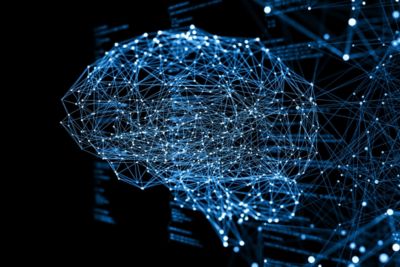-
United States -
United Kingdom -
India -
France -
Deutschland -
Italia -
日本 -
대한민국 -
中国 -
台灣
-
Ansys is committed to setting today's students up for success, by providing free simulation engineering software to students.
-
Ansys is committed to setting today's students up for success, by providing free simulation engineering software to students.
-
Ansys is committed to setting today's students up for success, by providing free simulation engineering software to students.
-
Contact Us -
华体会体育APP手机版下载 -
Students and Academic -
For United States and Canada
+1 844.462.6797
ANSYS BLOG
January 27, 2022
2022: The Year AI Takes Center Stage
Despite many countries beginning the year under lockdown restrictions, 2021 still managed to bring yet another year of mass technological innovation. We saw everything fromthe acceleration of green hydrogen, to the breakthrough of messenger RNA that brought us two of the most effective COVID vaccines, to even more advanced language computer models.
While innovations continue to evolve, Ansys predicts that 2022 will see simulation andartificial intelligence(AI) become even more powerful than ever. Leveraging the likes of the growing trends in AI, such as AI engineering and generative AI, Ansys will help its customers become even faster, more efficient, and more competitive. Here are some thoughts on the trends we see impacting simulation the most in 2022:
AI is Every Organization’s Golden Ticket
Simulation today is governed by the laws of physics. Here at Ansys, we use physics-based simulation to enable customers to "test run" hundreds of different product designs, without the need for physical prototypes. However, if used on a complex product, the simulation process can take thousands of hours. But with AI, you can accelerate the simulation by factors of 100, and that all comes down to training the data through AI engineering.

AI engineering, in terms of simulation, involves feeding the simulation program multiple use cases that result in different outputs. However, the amount of training data needed in simulation is extortionate, causing many engineers to simply turn their backs on it.Ansys’most recent innovation, a machine learning-based partial differential equation solver, allows for this training to occur with far less training data, whilse retaining the same level of accuracy. This faster, more efficient way of running a simulation is set to pave the way for product development into 2022.
In addition to AI engineering, simulation will also be affected by generative AI. In traditional design, an engineer would design a product using a computer-aided design (CAD) tool.This would then be handed over to an analyst who would work out how the product would work. The two would go back and forth until the design was optimal, much like how an architect and structural engineer collaborate to create a building that is both beautiful and structurally sound.
Generative AI digitalizes this process, but at scale. You present an idea and name the constraints, and AI generates 10,000 possible designs. With the power of fast simulation, these designs can be rapidly generated and the computer will offer the three best designs, saving huge amounts of time and money. Much like receiving recommendations after searching for a product on Amazon, generative AI will offer design recommendations that may not have been thought of initially. The resultant boost in creativity will prove to be important in 2022, as companies look to keep up with the ever-evolving market demands.
Reach for the Stars and You’ll Land Among the Clouds
Without thecloud, efficient collaboration is next to impossible. With engineers often located across the globe, design updates are sent back and forth through complex email chains, which inevitably only serve to stunt creativity. Transporting your design software to the cloud allows engineers to simultaneously work on a single design. Design, simulation, and AI can all be done on the cloud, allowing engineers to truly collaborate in real-time, resulting in more accurate and faster designs.
Many Ansys customers are hesitant to upgrade to cloud storage, several with concerns over the safety of their data. Using a legacy system puts your data’s safety into the hands of the 10 or so cyber experts within your company. On the cloud, your data is protected by thousands of security experts from leading organizations, and it's arguably safer that way. Fear of the unknown should not deter you from the cloud. Whether your cloud is public, private, or hybrid, Ansys tools can be leveraged to enable employees to work collaboratively.

The Magic Ingredient? Data.
In the industry today, there is a perfect storm of activity brewing that will facilitate the use of AI in the year ahead. Historically, the cost of storing data was so high, only a limited amount of training data was stored and used for AI, rendering it a costly and somewhat inaccurate venture. Thanks to the cloud, you are able to store large amounts of data for next to nothing, allowing you to better train your AI for less. Thanks to innovations such as simulation, we now have access to multiple types of data, and given the accessibility of open-source data, the opportunities for advancement in AI and simulation are vast.
AI will make human designers even more powerful. Technology allows us to stretch our own capabilities. Before calculators, we had to rely on mental math and written equations. Before AI, we had to rely on designing by hand through trial and error. Organizations using data-powered AI engineering and generative AI while collaborating on the cloud are set to pave the way for a new level of innovation in 2022.
See What Ansys Can Do For You
See What Ansys Can Do For You
Contact us today
Thank you for reaching out!
We’re here to answer your questions and look forward to speaking with you. A member of our Ansys sales team will contact you shortly.













